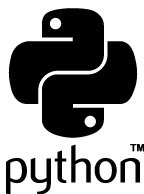Django Best Practices
Sudip Kafle
@kaflesudip

A web framework for perfectionists with deadline
Why Django?

Fast
Batteries included
Secure
Community
We ♥ Python
I am a beginner
-
Learn Python - http://www.diveintopython3.net/ -
Try Django's official Tutorial - https://docs.djangoproject.com/en/1.7/intro/tutorial01/ -
Learn Test Driven Development http://chimera.labs.oreilly.com/books/1234000000754 -
Learn about Django's best Practices http://www.amazon.com/Two-Scoops-Django-Best-Practices/dp/098146730X
MVC MTV Architecture
Models -> Models
Views -> Templates
Controller -> Entire Framework
Browser
Views
Models
Templates
URLs


http://flipkarma.com/project/corporate-decision-support-system-for-telecommunic/
'^project/(?P<slug>[-\w]+)/$'class ProjectDetailView(DetailView):
class Project(models.Model):
select * from Project where slug='...'
Raw Data
Data(objects)
Data + other..
HTML
URLS
Maps regular expressions to Python functions.
'/project/[0-9]+'
why not '^project/{id}/$'
Never do '/project/(.+)'
Models
# product/models.py
class Product(models.Model):
name = models.Charfield()
description = models.StringField()
price = models.FloatField()
category = models.ForeignKeyField(subject)
def get_cheapest(self):
.........................
+---------------------+--------------+------
| Field | Type | Key |
+---------------------+--------------+-----|
| id | int(11) | PRI |
| name | varchar(300) | |
| description | longtext | |
| price | float | |
| category_id | int(11) | MUL |
+---------------------+--------------+-----+Most of the business Logic reside in models
Views
Gets the data from models and sends it to the templates
No business logic
from .models import Product
def product(request, id):
product_object = Product.objects.get(id=id)
return render_to_response("products.html", {"product": product_object})
Templates
HTML + some templating languages.
<!-- product.html -->
<!DOCTYPE html>
<html lang="en">
.............
<body>
<h1>{{product.name}}</h1>
{% if product.description %}
{{ product.description }}
{% endif %}
</body>
</html><!-- product.html -->
<!DOCTYPE html>
<html lang="en">
.............
<body>
<h1>Nike Shoes</h1>
The shoes are really awesome
priced at ...
</body>
</html>
# at models
def price_in_dollar(self, conversion_rate):
return (self.price) / conversion_rate
# at views
price_in_dollar = product.price_in_dollar(101)
# at templates
Price in $: {{price_in_dollar}}-
Fat models
-
Thin views
-
Dumb templates
Apps
| | -- project
| | |-- app1
| | | |-- __init__.py
| | | |-- admin.py
| | | |-- forms.py
| | | |-- models.py
| | | |-- tests.py
| | | `-- urls.py
| | |-- app2
| | | |-- __init__.py
| | | |-- admin.py
| | | |-- forms.py
| | | |-- models.py
| | | `-- urls.py
| | |-- project
| | | |-- __init__.py
| | | |-- settings.py
| | | |-- urls.py
| | | `-- wsgi.py
| | |-- manage.py
| | |-- static
| | |-- templatesGolden Rule for App Design
Design app that does one thing
- Try to explain what your app does in One sentence
- If you have 'and' in the sentence,
- Break it into two or more apps
- My app provides the ability to manage user accounts and upload videos.
Mistakes as Beginners
Don't mess up with settings.py
- Don't change STATIC settings. The defaults work on development environment without collectstatic.
- TEMPLATE_DIR, DATABASES and INSTALLED_APPS are to be changed.
- Windows style back slash - 'project\app\..'
- Use - 'project/app/...
Don't be afraid to create multiple apps
One App for the complete project will make it painful later
Leverage the power of forms.py
Don't hardcode the urls
Bad:
<a href="/product/{{id}}">......</a>
Good:
<a href="{% url 'product_page' id %}"....</a>
Prefer reverse in views.
reverse('product_page', args=(id,))
Don't mess up with security
- Avoid csrf_exempt in most cases
- Avoid {{ | safe }} filter in templates
- Don't trust user's data.
Final Tips
-
Use Virtualenv
-
Use Class Based Views
-
Django Debug Toolbar
-
iPython / bPython
-
API's - Django Rest Framework
-
Don't ignore tests.
-
Use Fabric, Ansible or chef for deployment
-
Master Python, data structures ...

Twitter / fb/ linkedin/ G+: @kaflesudip


meroanswer.com
Sudip Kafle
flipkarma.com
sudip@phunka.com
CTO and CoFounder at Phunka Technogies
Django Best Practices
By Sudip Kafle
Django Best Practices
- 5,759


